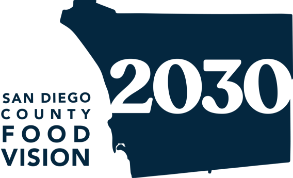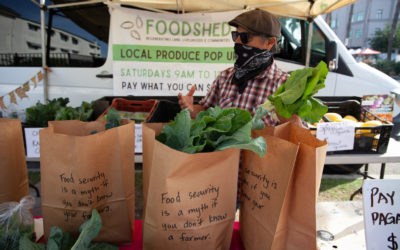Becoming a subscriber to Foodshed’s Fresh 5 program—a weekly distribution of fresh, seasonal produce, grown by the small farmers who make up the Foodshed cooperative—means you’re in for two surprises with every delivery. One is the produce itself: an ever-changing...
Objective 7
Scale Up Food Waste Prevention, Recovery, and Recycling Initiatives
Introduction
You’re digging around the back of your refrigerator, looking for the ketchup, when you suddenly find a pack of forgotten, moldy strawberries. Sound familiar? You’re not alone.
We all waste food—most of the time, inadvertently. However, wasteful habits have a serious cumulative impact—one that has grown exponentially over the years. In the last three decades, the amount of food wasted per person in the U.S. has nearly doubled. Today, between 35-40% of food produced in the United States goes to waste.
Food loss and food waste occur at every step of the supply chain, with the root cause traced back to concentration within the marketplace. Our industrial food system moves large quantities of food along lengthy supply chains that create distance between producers and consumers. Long, consolidated supply chains have made it difficult to adapt to shifting market demands, and have also created unrealistic cosmetic standards for food. The widespread perception of food as a commodity has also led to an overall culture of waste and prompted wasteful habits at home. Consumers are by far the greatest food waste generators across the entire food supply chain.
When food is wasted, so are all of the resources that went into producing it, including the water, fertilizer, and labor needed to grow food, along with the energy required for transportation and processing. According to CalRecycle, reducing short-lived climate super pollutants like organic waste will have the fastest impact on the climate crisis.
While food is landfilled by the ton each day, thousands of people are simultaneously experiencing food insecurity: 616,000 a year in San Diego County alone, prior to COVID-19, and over 1 million in the County during the pandemic. Food recovery—the practice of redirecting edible food that would otherwise go to waste, and distributing it to hunger relief organizations—provides local organizations with additional, and possibly more diverse food resources for feeding those in need.
The scale at which food waste is happening is shocking. Fortunately, solutions have been identified across the food system and hold significant potential to benefit society, the environment, and our economy. With the issue of food waste prevention gaining momentum, the time is ripe to advance efforts.
Chapter Summary
Wasted food equals wasted resources.
In the United States, wasted food is estimated to consume: 14% of all freshwater use, 18% of all cropland, and 24% of landfill space.
Reducing food waste is a top strategy for decreasing carbon emissions.
Project Drawdown estimates that 87 to 95 gigatons of carbon dioxide can be reduced by decreasing food waste by 50-75% globally.
SB 1383 sets targets for reducing food waste in California.
SB 1383 aims to reduce organic waste disposal by 50% from the 2014 level of 22.9 million tons by 2020, and by 75% by 2025—and increase the recovery of currently disposed, surplus food by at least 20% by 2025.
Local food recovery organizations lack the capacity to rescue more food.
In a survey of 162 food pantries in San Diego County in 2018, over 50% indicated that they needed at least one cargo van or truck within the next year to meet their transportation needs, and 60% indicated a need for more cold storage space.
Preventing food waste results in greater efficiencies and savings for food businesses.
A review of over 1,200 international food businesses found that for every $1 invested in food loss and waste reduction, a $14 return is realized.
San Diego County does not currently have enough recycling infrastructure to process food scraps.
A 2019 study estimated that the region could produce 4.3 times more compost and more than double the amount of mulch with added recycling infrastructure.
Consumer education can drive food waste behavior change in residents.
The Save the Food, San Diego! EcoChallenge consumer education program demonstrated a 38% reduction in household level food waste by participants.






